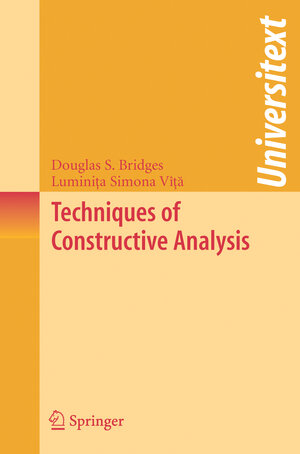
From the reviews:
„Constructive mathematics is often mistakenly thought to be a branch of formal logic, or to involve recursive function theory. The recent Bridges-Vîta textbook is an exemplar of perseverance in efforts to correct this situation. For students at the graduate level it is an excellent introduction to constructive mathematics: for the more experienced reader it is a portal to some of the latest research using constructive methods.“ (Mark Mandelkern, Zentralblatt MATH, Vol. 1107 (9), 2007)
„Bridges and Vita (both, Univ. of Canterbury, New Zealand) offer a book, written jointly by an associate (Bridges) of the famous Errett Bishop … . Thorough index; plentiful exercises and references. Eminently suitable. Summing Up: Recommended. Upper-division undergraduates through faculty.“ (F. E. J. Linton, CHOICE, Vol. 44 (11), August, 2007)
„The authors have written a valuable introduction to constructive analysis, devoting the larger part of their space and efforts to subjects from constructive functional analysis, a field to which they have made important contributions themselves. … Without a doubt, this well-written book shows constructive analysis to be a serious and important subject. The authors, who have thought on their subject long and deeply, deserve our thanks.“ (Wim Veldman, Mathematical Reviews, Issue 2008 a)
This book is an introduction to constructive mathematics with an emphasis on techniques and results that have been obtained in the last twenty years. It is the only book to deal with developments in Bishop-style constructive analysis over the past 20 years. The text covers fundamental theory of the real line and metric spaces, focusing on locatedness in normed spaces and with associated results about operators and their adjoints on a Hilbert space. There are two appendices to the book. The first gathers together some basic notions about sets and orders; the second gives the axioms for intuitionistic logic. The intended readership of the book consists of senior undergraduate and graduate students, as well as professional research mathematicians. No background in intuitionistic logic or constructive analysis is needed in order to read the book, but some familiarity with the classical theories of metric, normed and Hilbert spaces is necessary.



